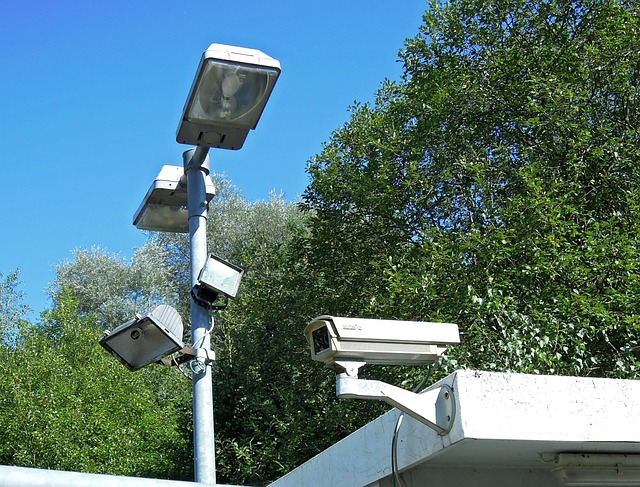Night vision technology in wireless surveillance cameras has transformed security, providing clear footage up to 100 feet away in low-light conditions. IR LEDs and thermal imaging offer cost-effective, high-resolution options for residential and commercial use. Features like wide fields of view, optical zoom, motion detection, and water-resistant housing enhance system effectiveness. Proper camera placement, reliable power connections, and regular maintenance ensure optimal performance with remote access and alerts.
“Enhance your property’s security with the power of night vision technology. In today’s digital era, wireless surveillance cameras equipped with advanced night vision capabilities offer unparalleled peace of mind during low-light and nighttime conditions. This comprehensive guide explores the inner workings of night vision technology and its distinct advantages.
We delve into various types of wireless surveillance cameras designed for optimal nighttime use, highlighting key features to consider before making a purchase. Furthermore, learn about the setup process and maintenance tips for your wireless night vision surveillance system.”
Understanding Night Vision Technology: How It Works and Its Benefits
Night vision technology has revolutionized security and surveillance, especially in low-light conditions or during the nighttime. This advanced feature is now a standard in modern wireless surveillance cameras, offering enhanced visibility and peace of mind for homeowners and businesses alike. The key to understanding night vision lies in its ability to capture and amplify light, even in the darkest environments.
Wireless surveillance cameras equipped with night vision employ infrared (IR) technology to detect and convert heat energy into visible light. These IR LEDs emit a subtle glow, illuminating the surroundings and providing clear images that can be seen up to 100 feet away. This benefit is particularly valuable for outdoor security, as it allows for constant monitoring of entries, exits, and suspicious activities without disrupting neighbors’ sleep or privacy. Night vision technology’s ability to capture detailed footage in complete darkness makes it a powerful tool for ensuring round-the-clock security.
Types of Wireless Surveillance Cameras for Nighttime Use
Wireless surveillance cameras have revolutionized nighttime security, offering advanced features for low-light conditions. These cameras typically employ infrared (IR) technology to capture clear images even in complete darkness, making them ideal for outdoor and indoor monitoring. There are two primary types: IR-based and thermal imaging.
IR-equipped wireless surveillance cameras use LED lights to illuminate the scene, enabling them to record high-resolution footage during nighttime. They are affordable and widely available, suitable for homes and small businesses. In contrast, thermal imaging cameras detect heat signatures, providing unique insights into the environment. This technology is particularly useful in challenging conditions where traditional visible-light cameras struggle, making them a game-changer for critical security applications.
Key Features to Consider When Choosing a Night Vision Camera
When selecting a night vision camera, several key features should be at the top of your list to ensure optimal performance in low-light conditions and effective nighttime security. First and foremost, look for high-quality image sensors, such as those with a resolution of 1080p or higher, which capture clear and detailed footage even in pitch black. These advanced sensors often employ infrared technology, allowing them to detect heat signatures and produce vivid images using moonlight or artificial illumination.
Another crucial aspect is the camera’s field of view (FOV) and zoom capabilities. A wider FOV ensures comprehensive coverage of your desired area, while optical zoom enhances detail without pixelating the image. Wireless surveillance cameras also offer the advantage of remote access and monitoring via mobile apps, providing peace of mind and flexibility in managing your security system from anywhere at any time. Additionally, consider features like motion detection, water-resistant housing, and easy installation to further enhance the camera’s effectiveness as a robust nighttime security solution.
Setting Up and Maintaining Your Wireless Night Vision Surveillance System
Setting up a wireless night vision surveillance system involves strategically placing your cameras to maximize coverage and ensuring they’re positioned for optimal viewing angles. Start by selecting locations that offer clear lines of sight, away from obstructions like trees or buildings, which could impede the camera’s view. Ensure each camera captures both motion and clear images in low-light conditions. Mount them securely, considering any local regulations, and connect them to a reliable power source. For best results, use cameras with infrared technology for enhanced night vision.
Regular maintenance is key to keeping your wireless surveillance system effective. Regularly test the cameras’ connectivity and ensure signals are strong. Keep an eye on battery life, especially in outdoor units, and replace batteries promptly. Clean the lenses to prevent dust or debris from obstructing the view. Additionally, verify software updates to access new features and enhance security through remote access and motion detection alerts.
Night vision technology has revolutionized security, offering advanced protection through wireless surveillance cameras. By understanding how it works and selecting key features like image resolution and infrared intensity, you can ensure optimal performance in low-light conditions. With proper setup and maintenance, these systems provide a robust, 24/7 watchful eye, giving you peace of mind and enhanced safety for your property. Incorporate wireless surveillance cameras into your nighttime security strategy to stay vigilant and protected.
